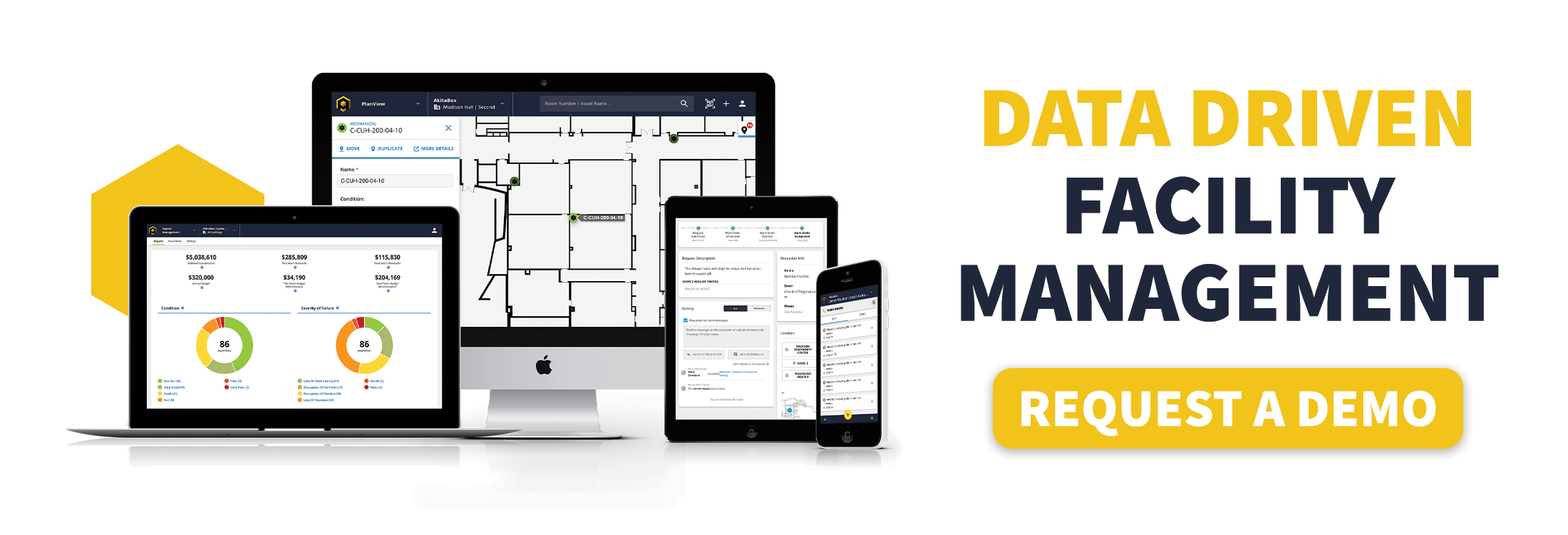How a Hospital Asset Management Plan Can Improve Quality of Care
Some might say that the facilities department is the foundation of care within a hospital. Facilities teams ensure that healthcare environments are safe, clean and properly maintained. If a healthcare environment does not meet these three expectations simultaneously, it is nearly impossible to achieve an excellent medical outcome.
Facilities teams have a big job within a hospital, which means they require specific tools and resources to be successful. An asset management plan helps teams maintain regulatory compliance, assess risks, reduce operating costs and improve operational efficiency within hospital buildings.
Keep reading to learn the critical role that an asset management plan plays in a hospital setting.
Hospital Asset Management Plans 101
What is hospital asset management?
Hospital asset management involves managing and maintaining machinery, equipment and physical assets within a hospital in the most efficient and cost-effective way possible. Assets may include physical infrastructures and systems such as heating, air-conditioning, refrigeration, ventilation, plumbing, electrical, pumps, condensers, generators, compressors and other systems within a building. Assets may also include healthcare-specific equipment, such as mobile beds and wheelchairs.
Why is a hospital asset management plan so important?
Hospitals contain an enormous amount of systems and medical equipment that are necessary for running an effective healthcare facility. Maintenance and facilities teams ensure that critical systems and equipment within a hospital are maintained, tested, and kept in a reliable working condition at all times.
Hospital asset management plans aim to protect the critical inner workings of a building in order to maintain a safe, clean and well-maintained medical environment.
How is a hospital asset management plan maintained?
One of the best ways to drive efficiency in a healthcare facility is with a building infrastructure management software. The right platform will allow maintenance teams to automate asset management workflows and improve efficiency of everyday operations.
One of the greatest perks of using software is having the ability to shift away from pen-and-paper management and “go digital” with asset management processes. Overall, the most successful maintenance teams utilize intuitive software solutions to optimize workflows, improve productivity, support safety and earn higher returns on investment within their hospitals.
How does an asset management plan improve quality of care?
It is up to a hospital facilities team to ensure that equipment is thoroughly inspected and repaired to ensure compliance with healthcare regulations. Here are three specific ways that a strong asset management plan can help your team comply with safety regulations and better serve patients.
1. Track your hospital’s most mission-critical equipment.
Building management teams are responsible for the assets inside and outside of their buildings. An asset management plan allows facilities teams to compile a formal inventory of maintainable or replaceable assets — those that need upkeep and those that need to be regularly changed.
Asset management plans also manage all systems that would cause extreme duress were they to fail. By keeping mission-critical equipment (and systems) up and running at all times, your organization will be empowered to provide an environment of care that consistently meets the needs of patients, staff and hospital visitors.
2. Ensure safety requirements are met through timely audits.
In a high-risk industry like healthcare, compliance with safety laws and regulations is absolutely crucial to patient safety. Compliance can even save your organization from potential lawsuits, hefty fines or the loss of licenses.
A building infrastructure management platform can be used to help your team build out a reliable asset management program. Your facilities team can use an inspections application to simplify inspection rounds, compile inspections results in a single source of truth and even create work orders based on anything that fails inspection.
Patient safety is directly related to the state of your facilities, providing even more reason to use facilities software to improve your compliance posture and maintain Joint Commission accreditation.
3. Support a preventive approach to maintenance and equipment care.
Preventive maintenance (also called “preventative maintenance”) is a systematic approach to building operations that lessens the likelihood of equipment failures through regularly scheduled work while the asset is still functioning.
Unlike reactive maintenance, which occurs when equipment has already broken down, preventive maintenance is a more proactive approach to keeping assets in optimal working order. (Click here for a free copy of our Facility Management Preventive Maintenance Guide.)
A robust asset management program will enable your facilities team to get ahead of reactive maintenance and focus their efforts on performing routine check-ups on equipment. Checking equipment regularly means they’ll last longer since issues are spotted early and can be dealt with as needed. Not only will you avoid excessive deferred maintenance, but you’ll also help equipment remain in its best shape possible — enabling medical staff to better serve patients in the long run.
Compliance-Driven Software Designed With Healthcare Inspection Routines
Excellence in healthcare starts with patient safety and compliance. As the industry’s leading software for collecting and analyzing building infrastructure data, AkitaBox helps your organization achieve operational excellence and ensure compliance within your buildings.
Click the image below to watch a video demonstration on how a building infrastructure management platform can enable your facilities department to improve safety, ensure compliance and ultimately improve the quality of care for all patients in your organization.
Read Next:



